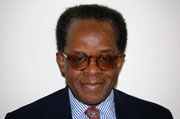
New York’s plan for affordable housing
By Lee A. Daniels NNPA Columnist
“Welcome to New York, baby. It’s a city full of fun!” goes a line from one of my favorite jazz songs of years ago. But, increasingly for many of its residents, New York has become a city full of high anxiety about where they can afford to live.
The migration to New York of businesses with high-salaried jobs and individuals from other parts of the country, and the world with eye-popping wealth in recent years have intensified its traditionally powerful high-end residential housing dynamic to a fever pitch. Several super high-rise apartment towers just south of Central Park have already re-made that part of Manhattan into a “billionaires row.” And the force of gentrification is now well established in numerous low- moderate and middle-income neighborhoods throughout the city.
If you’ve got a stash of cash, or are pulling down a high salary, you’ve got a lot of choices from one end of the city to the other. But New Yorkers who don’t fit into those categories—those with low, moderate, and even middle incomes—are worried that they’re being squeezed out of places to live.
A raft of statistics make it clear they’re right to be worried: Between 2005 and 2012, rents in the city rose by 11 percent, while the income of renters stagnated, when adjusted for inflation. Nearly 55 percent of renters are spending more than 30 percent of their incomes on housing costs, the standard gauge of a renter’s housing cost-to-income equilibrium. Even worse, more than 30 percent of renters are spending more than 50 percent of their incomes on housing.
In other words, New York has a crisis of affordable housing.
That crisis was overshadowed for much of the last decade by the shine of high-end development in Manhattan and the “novelty” of gentrification’s spread to once down-market neighborhoods in Brooklyn, Queens, and now The Bronx. But the nation’s devastating recession and new Mayor Bill de Blasio’s campaign of last year—with its “Tale of Two Cities” theme—brought the crisis into sharp focus. The city’s electorate responded by giving de Blasio a landslide victory; he won by nearly 50 percentage points.
Last week, de Blasio put forward a mammoth housing plan that would create and preserve a total of 200,000 units of affordable housing across the city during the next decade and meet the housing needs of 500,000 people. City officials said the plan would cost a total of $41 billion in city, state, federal and private-sector funds. Its ambitious goals are to increase neighborhoods’ stock of affordable housing as a means of maintaining the city’s economic and ethnic and racial diversity, while also guiding a certain degree of change in neighborhoods and enabling private-market developers working outside of the city’s high-rent districts to realize a reasonable profit.
“Affordable housing is part of the bedrock of what makes New York City work,” de Blasio declares in the Plan’s introduction. “It’s what underpins the economically diverse neighborhoods New Yorkers want to live in. It’s critical to providing financial stability for working families, helping them get ahead and build a better life.”
The Plan’s complexity makes it apparent that a lot of the questions in it come down to one big “if:” If those individuals and community organizations and local politicians; and those officials in municipal, state and federal offices; and those in the private-sector market agree with de Blasio’s assertion.
If there’s that consensus among the many parties in this plan of many moving parts, then, albeit the differences sure to crop up about this or that provision, and about this or that particular housing development in this or that neighborhood, the de Blasio Plan has a chance to succeed. It is correct to say that New York City’s future as a place to live as well as a city full of fun depends on it.
